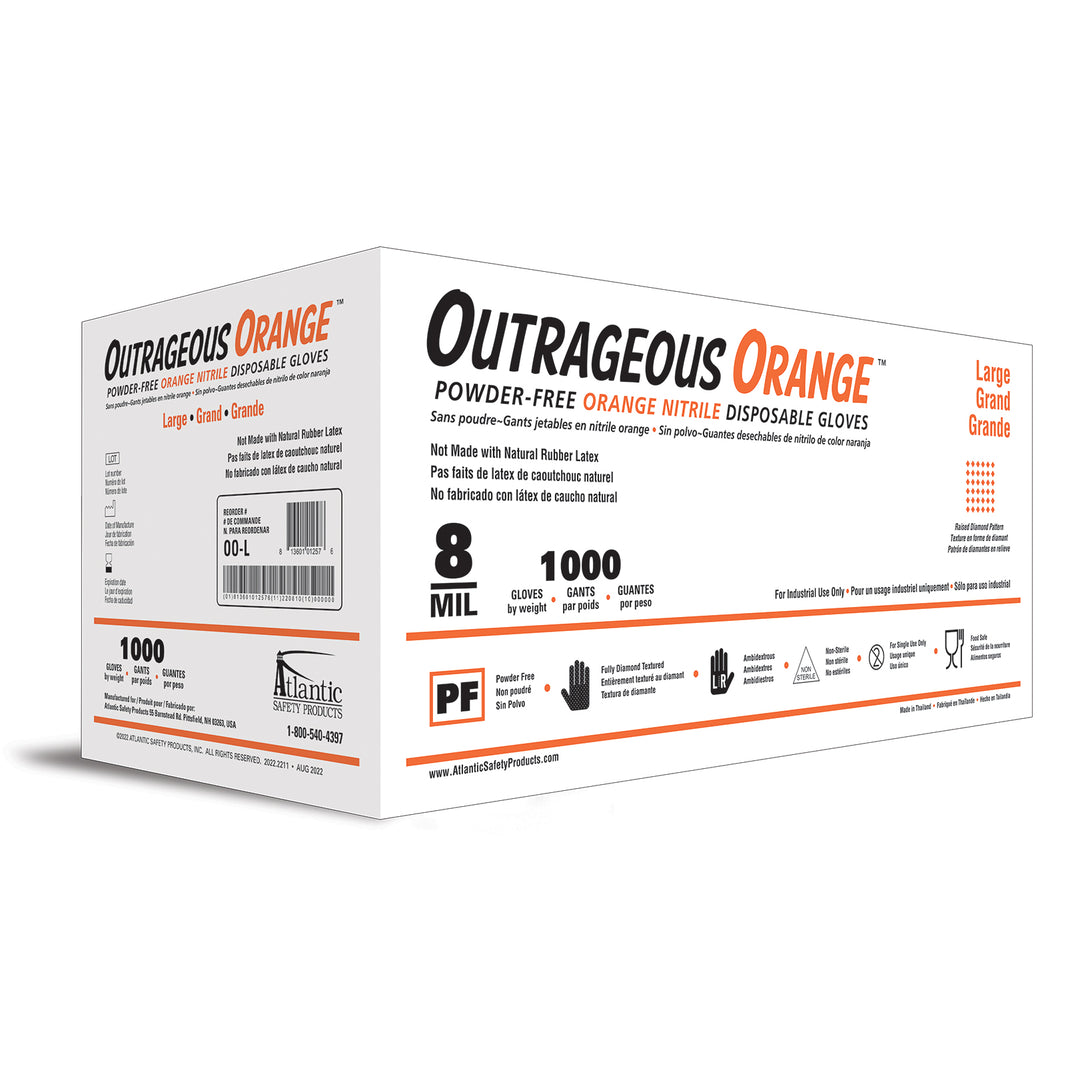In demanding construction and industrial work environments, selecting the proper hand protection is not just a matter of comfort but safety and efficiency. Workers in these fields regularly face many challenges that can compromise their hand safety. From handling rough materials that pose abrasion risks to exposure to hazardous chemicals, the consequences of inadequate hand protection can be severe, including injuries, skin irritations, and even long-term health issues.
Enter nitrile gloves, a beacon of reliability in the sea of protective solutions. Unlike their latex or vinyl counterparts, nitrile gloves offer a unique combination of toughness and resistance to chemicals, making them an ideal choice for heavy-duty applications. While latex gloves have long been a standard in various industries due to their flexibility and tactile sensitivity, they fall short in chemical resistance and can cause allergic reactions in some individuals. Vinyl gloves, on the other hand, provide a cost-effective solution for basic tasks but lack the durability and chemical resistance required for more hazardous work environments.
Nitrile gloves stand out in this landscape for their superior performance in challenging conditions. Made from synthetic rubber, these gloves are resistant to a wide range of chemicals, including oils and solvents, and provide excellent protection against abrasions and punctures. This makes them particularly suitable for construction and industrial work, where chemical exposure and physical hazards are a constant concern.
Chemical Resistance & Abrasion Resistance: The Defining Features of Nitrile Gloves
Chemical Resistance of Nitrile Gloves
Understanding chemical resistance in gloves is crucial for ensuring safety in environments where workers are exposed to hazardous substances. Nitrile gloves excel in this domain due to their synthetic rubber composition, which provides an impressive barrier against a wide range of chemicals. This includes oils, solvents, and certain acids and bases that can easily penetrate or degrade other glove materials like latex and vinyl.
The types of chemicals that nitrile gloves can resist are diverse, making them suitable for numerous applications in construction and industrial settings. This resistance is particularly important when workers handle corrosive materials, work with cleaning agents, or are exposed to hazardous waste. In these cases, nitrile gloves not only prevent direct skin contact with harmful chemicals but also reduce the risk of accidents caused by glove degradation.
Real-world examples highlight the effectiveness of nitrile gloves in providing necessary chemical protection. Case studies from industries such as automotive repair, painting, and chemical processing demonstrate how nitrile gloves have successfully prevented skin exposure to harmful substances, thereby ensuring worker safety and compliance with health regulations.
Abrasion Resistance of Nitrile Gloves
In addition to chemical resistance, nitrile gloves are highly valued for their abrasion resistance. This property is essential for hand protection in tasks that involve handling rough materials or working with tools and machinery that can wear down glove surfaces. Compared to latex and vinyl gloves, nitrile gloves offer superior durability against physical wear and tear, making them a preferred choice for applications where gloves are subject to frequent friction and abrasion.
Construction work, metal fabrication, and woodworking are real-life scenarios in which abrasion resistance is critical. In these fields, the robustness of nitrile gloves protects workers' hands from cuts, scrapes, and punctures, thereby reducing the risk of injuries and enhancing overall work efficiency.
The Significance of Glove Thickness and Durability
The relationship between glove thickness, durability, and resistance properties is a key consideration when selecting nitrile gloves. Thicker gloves typically offer higher resistance to chemicals and abrasions but may compromise dexterity and tactile sensitivity. Conversely, thinner gloves provide better flexibility and touch sensitivity but may not offer adequate protection for more hazardous tasks.
Selecting the appropriate thickness of nitrile gloves depends on the job task. For delicate operations requiring fine motor skills, thinner gloves are preferable. For heavy-duty tasks involving harsh chemicals or rough materials, thicker gloves are more suitable. This balance between protection, dexterity, and comfort is crucial in ensuring both safety and efficiency in the workplace.
Compliance with Standards
Ensuring the safety and efficacy of protective gloves, particularly in high-risk environments, is not just about material choice but also about adherence to established safety standards. Nitrile gloves, renowned for their chemical and abrasion resistance, are subject to various standards that guarantee their suitability for specific tasks.
Overview of Relevant Safety Standards for Chemical and Abrasion Resistance
Several international and national standards provide guidelines for evaluating the protective qualities of gloves, especially in terms of chemical and abrasion resistance. For instance, the American Society for Testing and Materials (ASTM) in the United States and the European Standard (EN) in Europe are two major bodies that set these standards. ASTM D6319 is a standard specification for nitrile examination gloves for medical applications, focusing on various parameters, including tensile strength and elongation. For protection against chemicals and micro-organisms, EN 374 is a relevant standard in Europe. It includes tests for permeability, degradation, and penetration by chemicals. Additionally, EN 388 is the standard for gloves' resistance to mechanical hazards, including abrasion resistance.
How Nitrile Gloves Meet or Exceed These Standards
Nitrile gloves are designed and manufactured to meet or exceed these stringent standards. Their chemical resistance is tested to ensure that they can effectively protect against a range of hazardous chemicals, as specified by EN 374 or similar standards. In terms of abrasion resistance, nitrile gloves often surpass the minimum requirements of standards like EN 388, offering enhanced durability for longer use without compromising protection. Manufacturers of nitrile gloves conduct rigorous testing to certify their products against these standards, ensuring that each glove batch adheres to the necessary safety criteria.
Importance of Selecting Certified Gloves for Specific Tasks
For professionals in construction, industrial, or medical fields, choosing certified nitrile gloves is crucial. Certification according to recognized standards assures users that the gloves have been tested and validated for specific hazards they are likely to encounter. This not only ensures the safety and health of the workers but also helps organizations comply with occupational safety regulations. By selecting gloves that are certified to meet relevant standards for chemical and abrasion resistance, users can have confidence in their protective equipment, ensuring they are adequately shielded against the specific risks of their work environment.
Balancing the Benefits and Limitations for Informed Decisions
Recognizing the Limitations of Nitrile Gloves
While nitrile gloves stand out for their chemical and abrasion resistance, it's important to acknowledge that no glove material is universally perfect. In certain situations, nitrile might not be the best choice. For example, when working with highly corrosive acids or organic solvents, specialized gloves may be necessary. Similarly, for tasks requiring extreme temperature resistance, nitrile gloves may not provide adequate protection.
Proper Usage and Glove Care
Maximizing the protective qualities of nitrile gloves also depends on correct usage and care. This includes choosing the right glove size for better dexterity, replacing gloves at signs of wear and tear, and understanding that while they are highly durable, they are not indestructible. Proper glove care, such as storing them away from direct sunlight and avoiding exposure to harsh chemicals beyond their resistance capacity, is crucial for maintaining their resistance properties.
Recap of the Protective Qualities of Nitrile Gloves
Nitrile gloves offer a commendable balance of chemical and abrasion resistance, making them an ideal choice in many industrial, construction, and medical applications. Their hypoallergenic nature, durability, and ability to withstand a variety of chemicals and physical stressors make them a reliable choice for hand protection.
Impact on Worker Safety and Productivity
The decision to use nitrile gloves can have a significant impact on worker safety and productivity. By providing adequate hand protection, these gloves reduce the risk of injuries and skin irritations, thereby decreasing downtime and enhancing overall efficiency. Their versatility and protective qualities also mean that workers can perform their tasks with confidence and comfort.
In conclusion, the journey to selecting the right glove material should be guided by informed decision-making. Understanding the strengths and limitations of nitrile gloves, their compliance with safety standards, and the specific needs of the task at hand will enable users and businesses to make choices that prioritize safety and efficiency. While nitrile gloves are an excellent option for many scenarios, the ultimate choice should align with the specific demands and hazards of the user’s environment.






